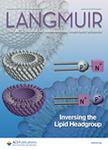版权所有:内蒙古大学图书馆 技术提供:维普资讯• 智图
内蒙古自治区呼和浩特市赛罕区大学西街235号 邮编: 010021

作者机构:Chengdu Univ Informat Technol Coll Optoelect Engn Chengdu 610225 Peoples R China Sichuan Univ Sci & Engn Coll Mat Sci & Engn Zigong 643000 Peoples R China Chengdu Univ Sch Mech Engn Chengdu 610106 Peoples R China Sichuan Univ Coll Mat Sci & Engn Chengdu 610064 Peoples R China
出 版 物:《LANGMUIR》 (Langmuir)
年 卷 期:2025年第41卷第4期
页 面:2735-2743页
核心收录:
学科分类:081704[工学-应用化学] 07[理学] 070304[理学-物理化学(含∶化学物理)] 08[工学] 0817[工学-化学工程与技术] 0805[工学-材料科学与工程(可授工学、理学学位)] 0703[理学-化学]
基 金:Department of Science and Technology of Sichuan Province [2024NSFSC0955] Sichuan Science and Technology Program [2023CL02] Material Corrosion and Protection Key Laboratory of Sichuan Province Support Program [KYTZ202243] Scientific Research Foundation of Chengdu University of Information Technology [2024XXCL001] Open Research Project of Key Laboratory in University of Sichuan Province
主 题:Anodes
摘 要:Metallic Zn is a promising anode for high-safety, low-cost, and large-scale energy storage systems. However, it is strongly hindered by unstable electrode/electrolyte interface issues, including zinc dendrite, corrosion, passivation, and hydrogen evolution reactions. In this work, an in situ interface protection strategy is established by turning the corrosion/passivation byproducts (zinc hydroxide sulfates, ZHSs) into a stable hybrid protection layer. The hydrolysis of the diglycolamine buffer layer on the zinc anode provides a homogeneous basic electrolyte environment for the generation of small-sized ZHS, thereby leading to the formation of a ZHS-based hybrid layer. Benefiting from this hybrid layer, uniform zinc ion flux and high anticorrosion ability can be achieved. As a result, the decorated symmetric cell presents a long cycling lifespan of over 1500 h at a current density of 1 mA cm-2 and an area capacity of 1 mAh cm-2. It also contributes to the appealing cycling and rate performance of Zn|NH4V4O10 full cells. This work provides insight into regulating and reusing interfacial byproducts for high-performance zinc metal batteries.